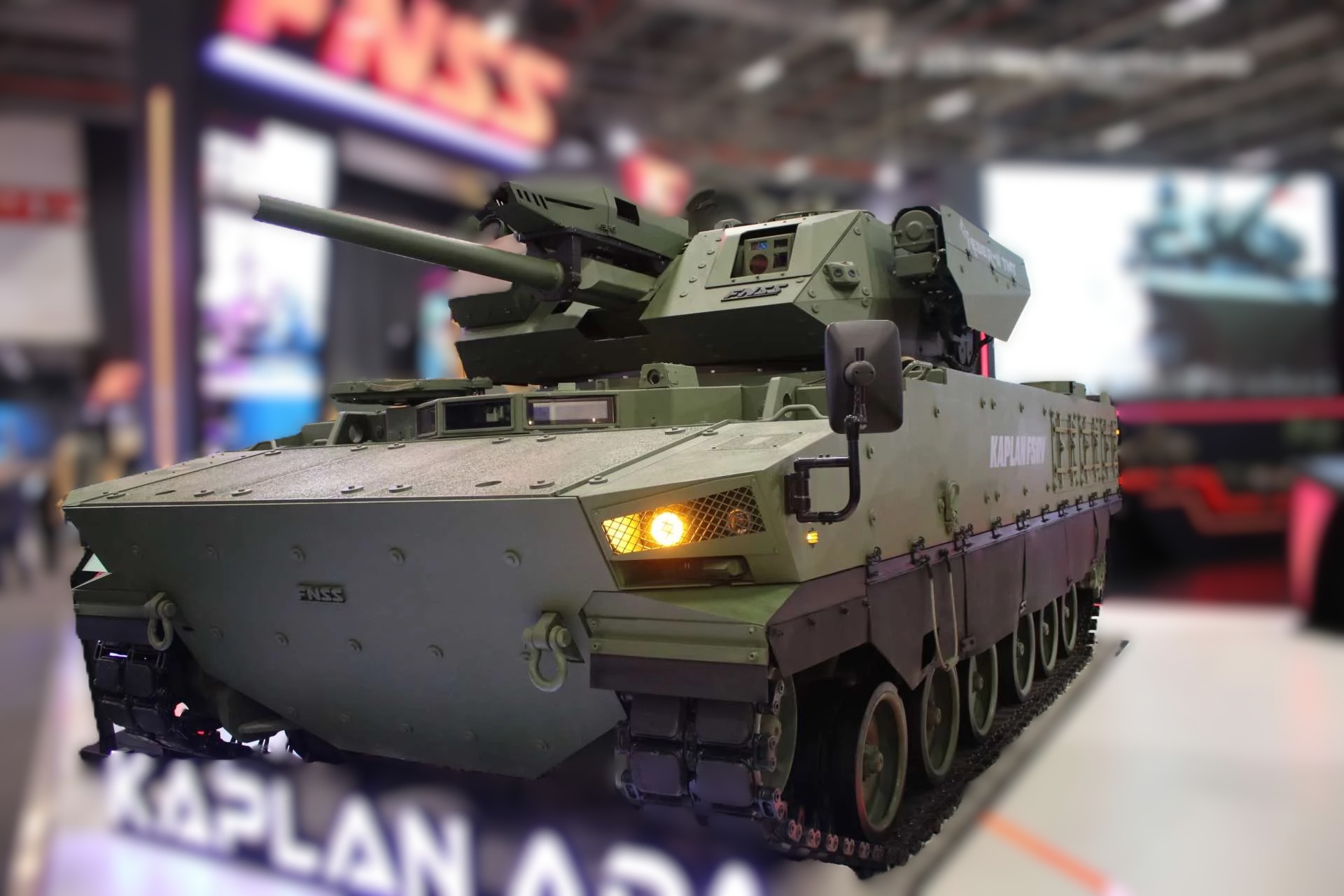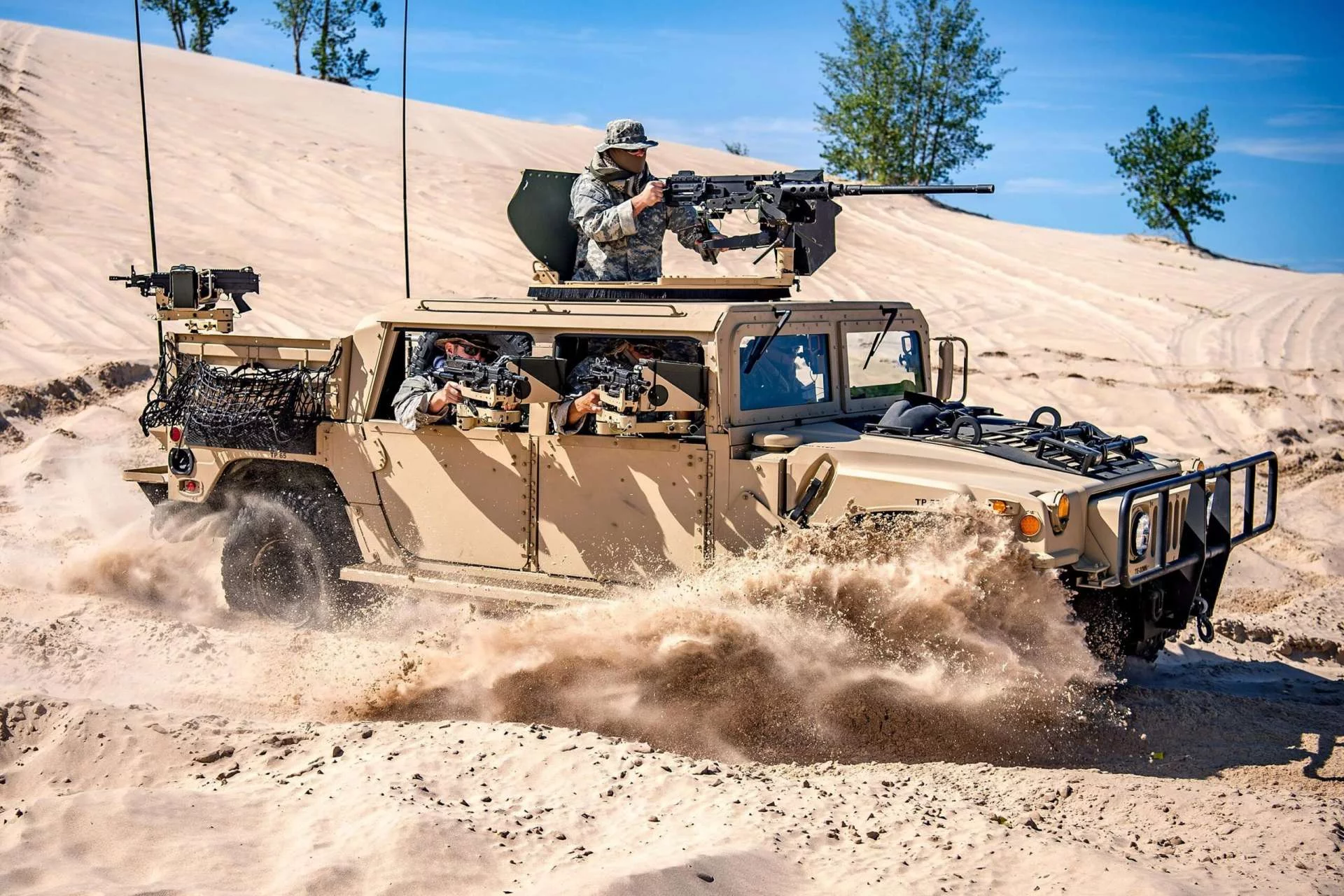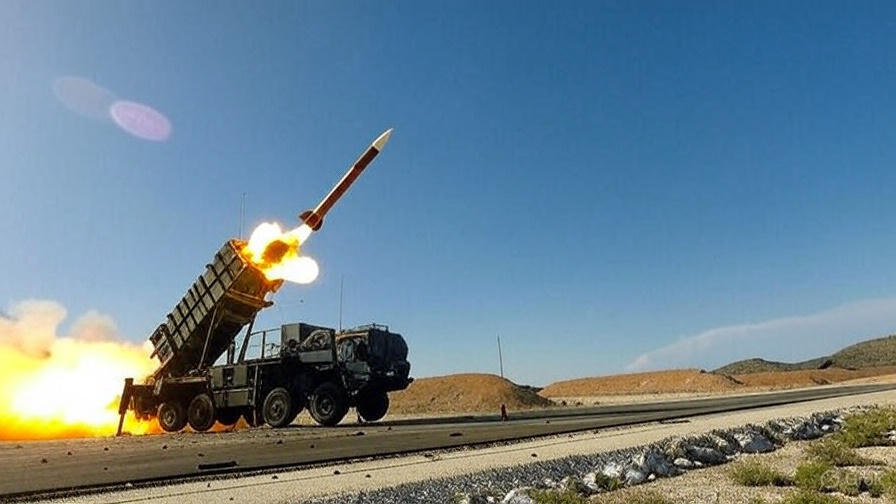At the 17th International Defence Industry Fair (IDEF 2025), held from July 22–27 at the Istanbul Expo Center, Turkish defense giant FNSS showcased its groundbreaking Kaplan ADA Air Defense Vehicle, a next-generation platform poised to redefine modern air defense capabilities. Equipped with the advanced Teber-2 TMT (Two-Man Turret), this vehicle marks a significant leap forward for Türkiye’s defense industry, blending cutting-edge technology with battlefield versatility to counter evolving aerial threats. The Kaplan ADA, displayed at Hall 4, Booth 4-A05, captivated attendees with its low-silhouette design, high firepower, and integration of state-of-the-art sensors, positioning it as a game-changer in both symmetric and asymmetric warfare.
A New Era of Air Defense: Kaplan ADA’s Design and Capabilities
The Kaplan ADA is built on the proven chassis of the Kaplan Medium Tank (MT), a platform already in service with the Indonesian Army, ensuring reliability and operational readiness. This tracked vehicle is engineered for agility, survivability, and adaptability, making it ideal for a range of combat scenarios. Its low-profile structure enhances stealth, reducing its detectability on the battlefield, while its modular design allows for seamless integration of various weapon systems and mission-specific configurations.
At the heart of the Kaplan ADA lies the Teber-2 TMT, a two-man turret that houses a Northrop Grumman 30 mm MK44 dual-feed automatic cannon, capable of switching to a 40 mm configuration for increased lethality. The turret also features a 7.62 mm coaxial machine gun, a 12.7 mm machine gun, and an Anti-Tank Guided Missile (ATGM) system, providing a multi-layered approach to engaging both aerial and ground targets. The Teber-2 TMT’s dual 30 mm cannons enable simultaneous engagement of multiple targets, a critical feature for countering drone swarms and low-altitude threats. With a firing rate of 200 rounds per minute and 310 ready-to-fire 30 mm rounds, the turret ensures sustained firepower. Its two-axis stabilization, electric actuators, and advanced fire control system allow for precise targeting, even on the move, with a gun elevation range of -10° to +45°.
The Kaplan ADA’s reconnaissance and Intelligence, Surveillance, Target Acquisition, and Reconnaissance (ISTAR) capabilities are equally impressive. Equipped with panoramic sights, independent hunter-killer optics, and a battlefield management system, the vehicle offers enhanced situational awareness. Optional tethered drones and electronic warfare systems further bolster its ability to detect and neutralize threats, making it a versatile asset for modern mechanized formations. The vehicle’s compatibility with NATO communication and logistics standards ensures seamless integration into joint operations, while its compact design allows transport via strategic airlifters like the A400M, C-17, and Il-76.
Strategic Importance and Market Potential
The Kaplan ADA’s debut at IDEF 2025 underscores Türkiye’s growing prominence in the global defense industry. FNSS, with over 35 years of experience, has a strong track record of delivering advanced armored vehicles, including the Kaplan and PARS families, which are recognized for their modularity and performance. The Kaplan ADA builds on the success of the Kaplan MT, which has already been exported to Indonesia, demonstrating FNSS’s ability to meet international demands. The vehicle’s design draws inspiration from leading platforms like the British Ajax, French Jaguar 6×6 EBRC, and Russian BMPT Terminator, combining their strengths with Türkiye’s indigenous innovations.
The Kaplan ADA is tailored to address the rising threat of drones and low-altitude unmanned aerial vehicles (UAVs), which have become increasingly prevalent in modern warfare. Its anti-drone capabilities, supported by advanced sensors and missile systems, position it as a critical asset for ground units operating in mechanized infantry and armored formations. The vehicle’s ability to operate in near-silent mode, thanks to an auxiliary power unit, reduces its acoustic and thermal signatures, making it ideal for covert surveillance missions.
FNSS’s focus on user-centric design is evident in the Kaplan ADA’s integration of artificial intelligence (AI) applications, showcased at IDEF 2025. These AI systems provide operators with real-time data on vehicle status, weather conditions, and maintenance alerts, enhancing operational efficiency and mission readiness. The vehicle’s modular protection systems and rear-mounted powerpack further enhance its survivability, allowing it to adapt to diverse operational environments, from urban combat to rugged terrains.
FNSS’s Broader Showcase at IDEF 2025
Beyond the Kaplan ADA, FNSS presented a range of innovative platforms and turret systems at IDEF 2025, reinforcing its position as a leader in armored vehicle technology. The Kaplan Fire Support and Reconnaissance Vehicle (FSRV), also based on the Kaplan MT chassis, was another highlight, equipped with the same Teber-2 TMT and designed for both symmetric and asymmetric warfare. The PARS SCOUT 6×6 Armored Mobile Anti-Drone Vehicle and PARS SCOUT 8×8 BURÇ Mobile Air Defense System, displayed at the ROKETSAN stand, showcased FNSS’s commitment to countering aerial threats. Additionally, the Kaplan Hybrid Anti-Drone Vehicle with ROKETSAN’s ALKA Directed Energy Weapon System (DEWS) and the Pedestal Mounted Cirit (KMC) Kaplan configuration highlighted the company’s advancements in anti-drone technology.
FNSS also unveiled two new configurations of its ÇAKA Remote Controlled Weapon Station (RCWS) family: the ÇAKA 30/AT-O and ÇAKA AT-K. The ÇAKA 30/AT-O, designed for maritime conditions, is equipped with a CANiK VENOM LR 30 mm automatic cannon and two ROKETSAN OMTAS anti-tank missiles, offering high firepower and low recoil. The ÇAKA AT-K, fitted with a CANiK M2 QCB 12.7 mm machine gun and two short-range anti-tank missiles, is optimized for urban combat and rough terrains. These systems, displayed alongside the ZAHA Marine Assault Vehicle, demonstrate FNSS’s ability to deliver versatile solutions for land, sea, and air defense.
Global Impact and Future Prospects
The Kaplan ADA and FNSS’s broader portfolio at IDEF 2025 highlight Türkiye’s ambition to lead in next-generation defense technologies. The company’s emphasis on in-country partnerships, technology transfer, and localized production has strengthened its global presence, with successful exports to countries like Indonesia and the UAE. The Kaplan ADA’s compatibility with various missile systems, including ROKETSAN’s L-UMTAS and OMTAS, as well as its potential to integrate loitering munitions, makes it a flexible platform for international customers. FNSS’s collaboration with PT Pindad on the Kaplan APC program, set to enter production in 2025, further underscores its commitment to global cooperation.
The unveiling of the Kaplan ADA at IDEF 2025 has generated significant buzz, with posts on X praising its advanced sensors, high firepower, and low-silhouette design. Industry observers and defense enthusiasts alike have hailed it as a testament to Türkiye’s technological prowess, with potential to attract interest from NATO allies and other global partners. As modern warfare continues to evolve, the Kaplan ADA’s ability to counter drones, engage multiple targets, and integrate AI-driven systems positions it as a cornerstone of Türkiye’s defense strategy and a formidable contender in the global arms market.
Conclusion
The FNSS Kaplan ADA Air Defense Vehicle, with its Teber-2 TMT turret, represents a bold step forward for Türkiye’s defense industry. Its debut at IDEF 2025 not only showcases FNSS’s engineering excellence but also signals Türkiye’s readiness to address the challenges of modern warfare. With its unmatched firepower, advanced sensors, and modular design, the Kaplan ADA is set to redefine air defense capabilities, offering a versatile and future-proof solution for armed forces worldwide. As FNSS continues to innovate and expand its global footprint, the Kaplan ADA stands as a symbol of Türkiye’s growing influence in the defense sector.




